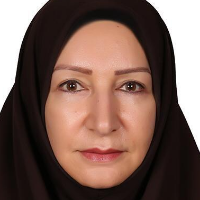Effect of biofertilizer, azocompost and nitrogen on morphologic traits and essential oil content of Dracocephalum moldavica L. in two regions of Iran
To determine the effect of biofertilizers and nitrogen on some morphologic traits and essential oil content of dragonhead (Dracocephalum moldavica L.), a field experiment was conducted as factorial in a randomized complete blocks design with 20 treatments and 3 replications. The study was performed in two locations during 2009-2010 on research field at Faculty of Agriculture, Tarbiat Modares University, and at the Khoy Agricultural Research Center in West Azarbaijan province. The treatments were consisted of two genotypes (landrace and SZK-1 cultivar), two seed inoculation treatments (either with or without bacterial inoculation with Azotobacter + Azosprillum + psedomonas) and five fertilization regimes (100% urea, 75% urea + 25% Azocompost, 50% urea + 50% Azocompost, 25% urea + 75% Azocompost and 100% Azocompost). Results showed that most of the studied morphologic traits were affected by genotype factor. The effect of fertilizer regime was significant on dry matter yield, percentage of essential oil and essential oil yield. The number of flowering branches in location one, and plant height, number of leaves per main stem and number of flowering branches in location two were affected by bacterial inoculation. Two-way interaction effects on a number of studied traits were significant. Three-way interaction effects were significant for the number of flowering branches in location one and the percentage of essential oil and dry matter yield in location two. The greatest plant height, height of the first flowering branch from ground level, number of leaves on the main stem, the number of lateral branches and essential oil yield were recorded for the landrace. The bacterial inoculation increased plant height, the number of leveas on the main stem, stem diameter and the number of flowering branches per plant. The application of 50% urea + 50% Azocompost increased dry matter yield, essential oil percentage and yield. The application of 100% Azocompost resulted in the least essential oil yield. Essential oil yield in landrace was more than that of SZK-1 cultivar. Bacterial inoculation could enhance the essential oil yield in both genotypes, particularly in landrace. In general, results showed that application of 50% urea + 50% Azocompost integrated with bacterial inoculation can be a suitable alternative to chemical fertilizers.
-
Investigation of variability in yield and yield components and adaptability of different species of savory (Satureja spp.) cultivated in Kurdistan province
F. Houshidari *, S. R. Tabaei-Aghdaei, F. Sefidkon, B. Yousefi
Iranian Journal of Medical and Aromatic Plants, -
Comparison of physicochemical properties of peppermint (Mentha piperita L.) distillate obtained from dry and fresh plant in vegetative and flowering stages and in different distillate to water ratios
Reyhaneh Taebnia, *, Ali Mohammadi Torkashvand, Ali Ashraf Jafari, Sepideh Kalate Jari
Iranian Journal of Horticaltural Sciences,


